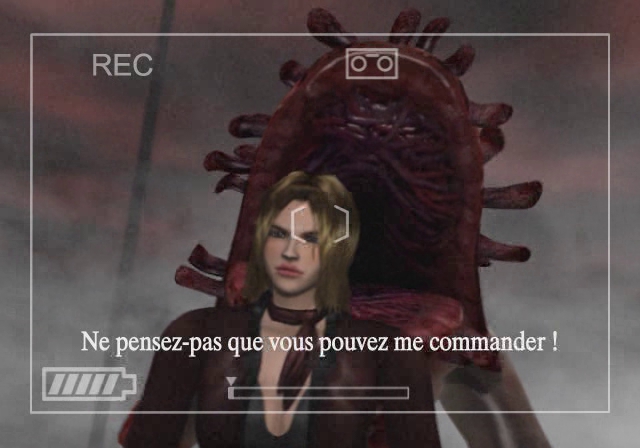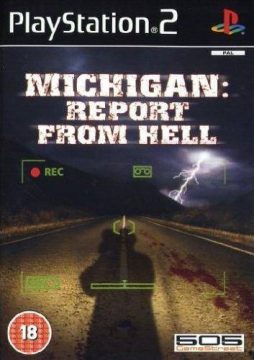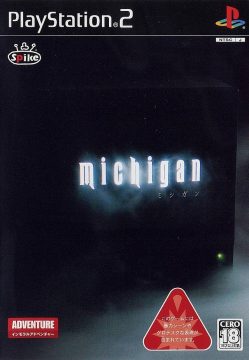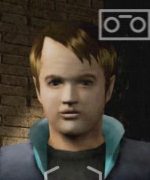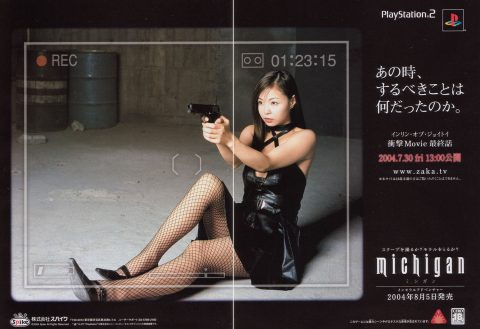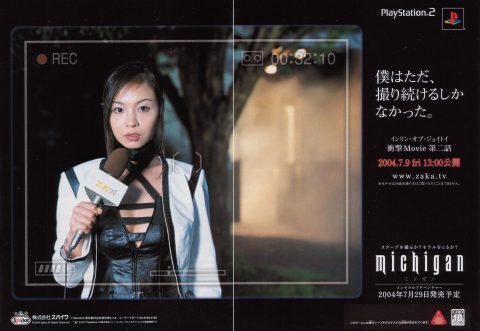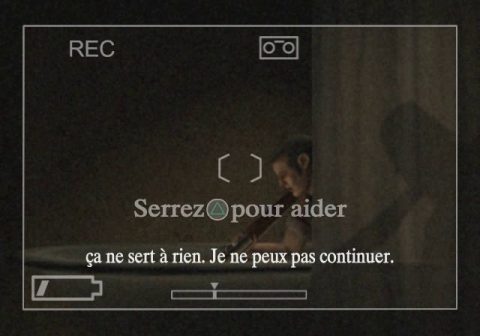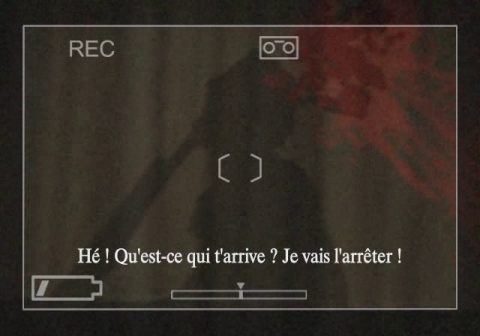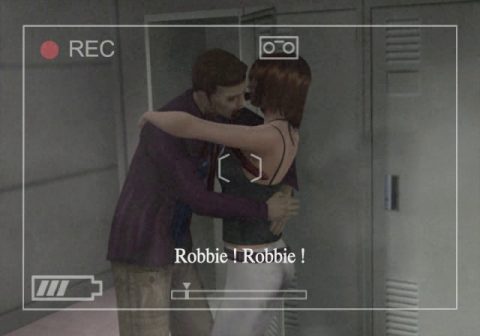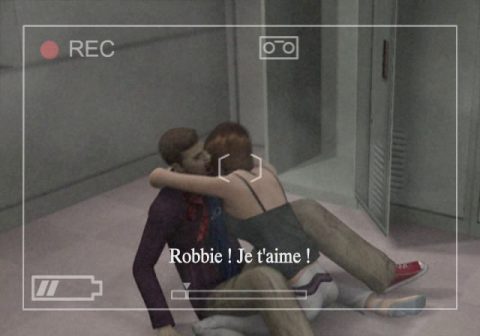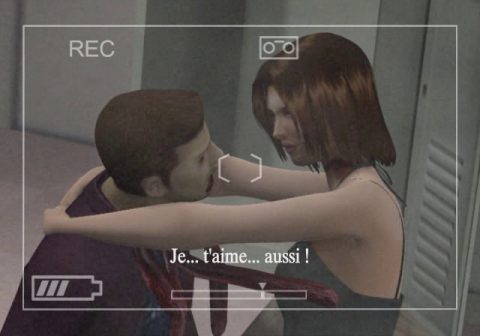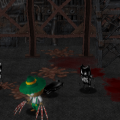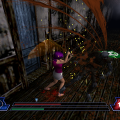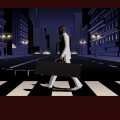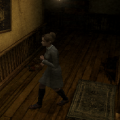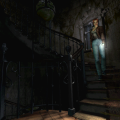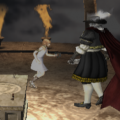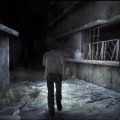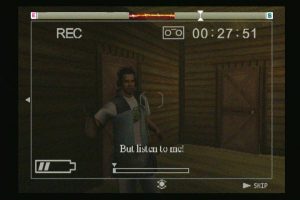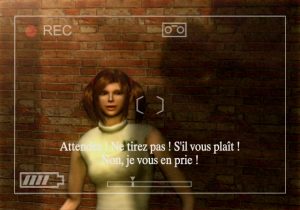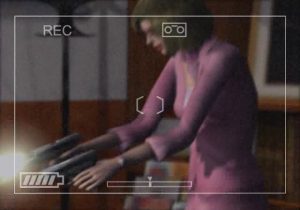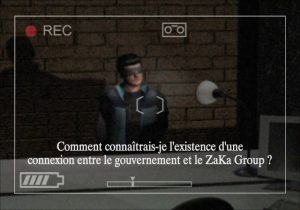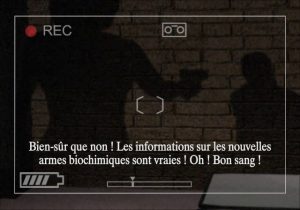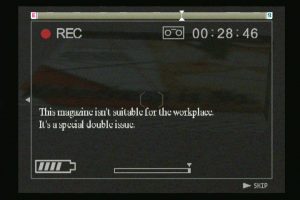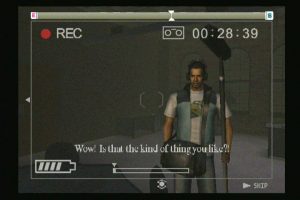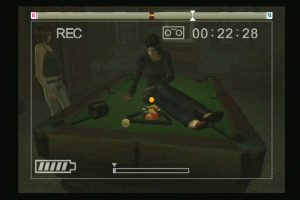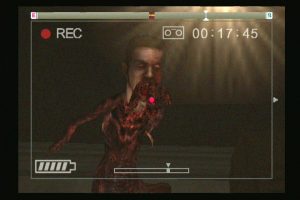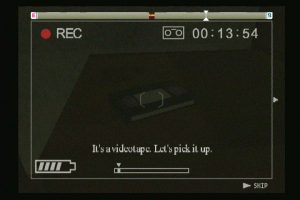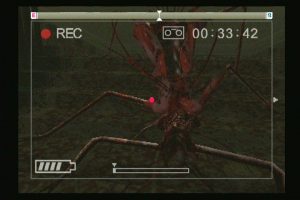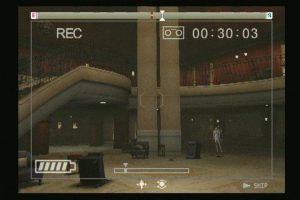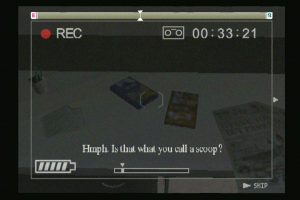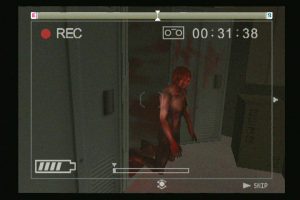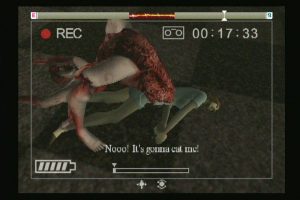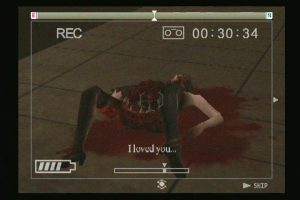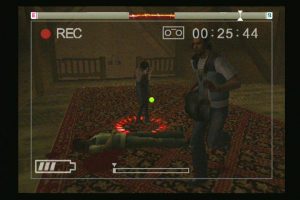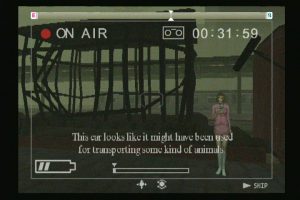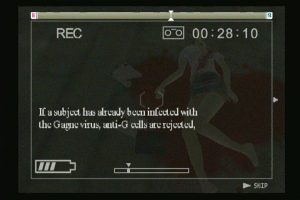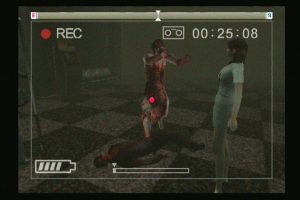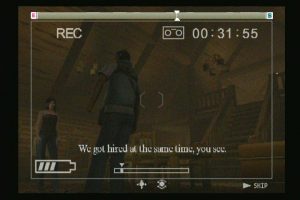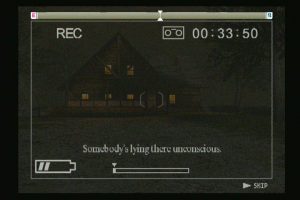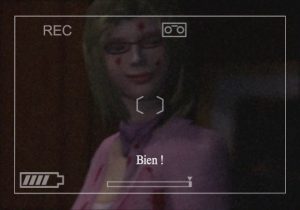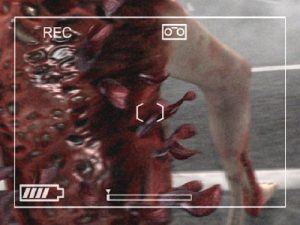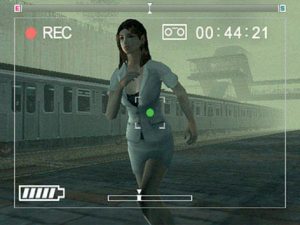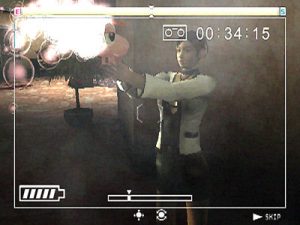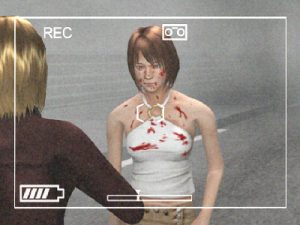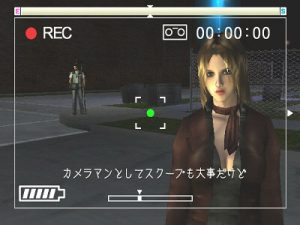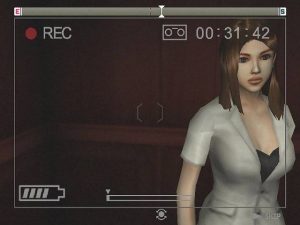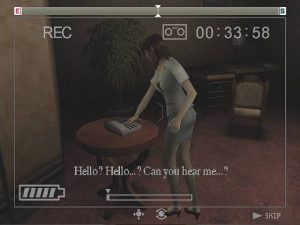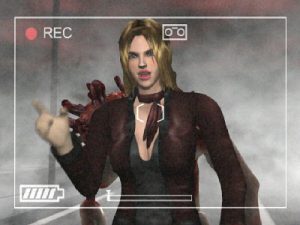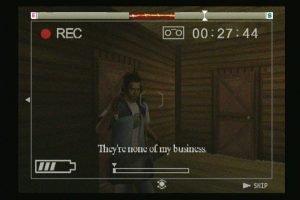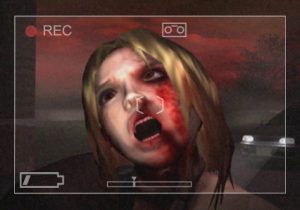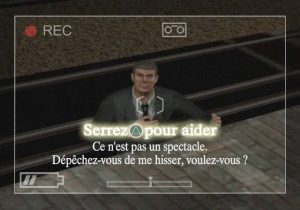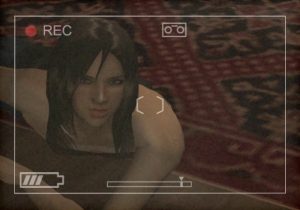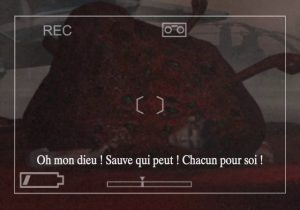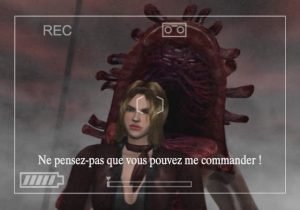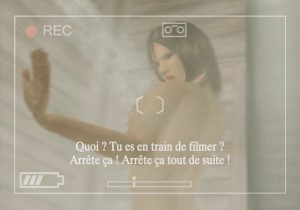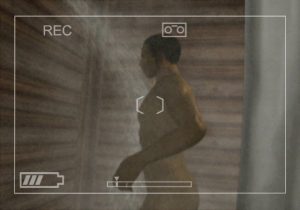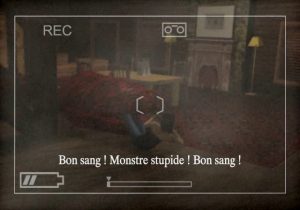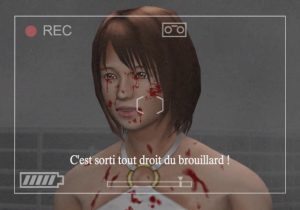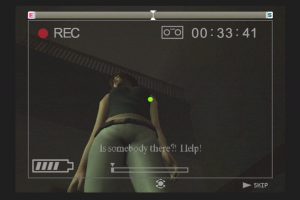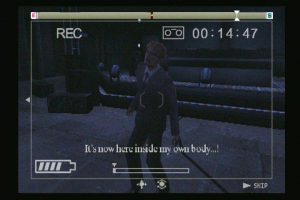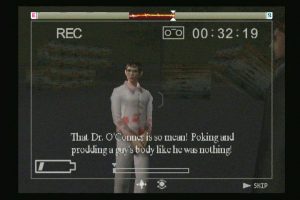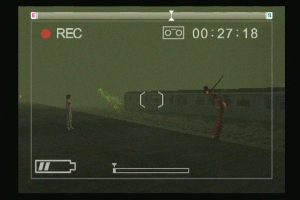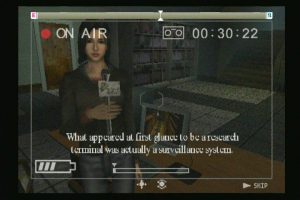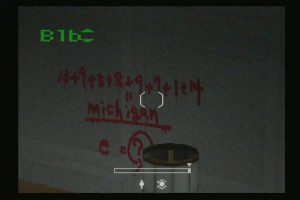For years there has been debate about the nature of games and what they are capable of as a medium. While external critics look in on our particular sphere of culture, accusing the medium of being limited and unable to compete with other creative works, those of us who follow games know better. If you’re aware of Grasshopper Manufacture you’ll know their output pushes the boundaries of mechanical, narrative and thematic experimentation in games – Michigan on the PS2 especially so. The man behind the company is Goichi Suda, affectionately known as Suda 51, and he revels in all that is punk; the man – nay, the legend – is Supreme GodKing of the unusual and unfathomable; a mentally maleficent messiah in this era of bland convention.
Which perhaps has little relevance to Michigan, since he didn’t really seem to have much involvement with it. According to the credits the real lunatic, depraved minds behind Michigan were the writers Nobuhiko Sagara and Ren Yamazaki. Strangely, according to MobyGames, apart from a few bit credits in a couple of other games, Michigan was the first title they had a major contribution towards. Someone from NudeMaker, responsible for the original Steel Battalion, is credited under a pseudonym for adaptation. Suda 51 is only credited for the original plan and some editing. Is he really the front man for Michigan, as interviews imply?
Michigan, which predates Grasshopper’s more renowned Killer7, is perhaps the company’s most outlandish game. It is equal measures of amazing and awful, on every level imaginable, and yet it’s so unashamed in its originality and almost-grindhouse brashness, that really it’s something everyone should experience at least once. Imagine if Troma Films made games, filled with gore and porn, and you’d have Michigan. Playing the role of a cameraman who can only passively film events (and occasionally ram things), you receive bonus points for filming female panty shots and freakishly gross monster death-scenes – refusing to save NPCs in order to record their splattery deaths is actually rewarded. There’s also a bit where a naked black guy in a shower accuses you of having secret affections, and in the Japanese release one of the reporters you filmed was based on a real-life model famous for fetish erotica. Hell, you even get bonus points by foraging for pornography during play.
As Suda himself might say: THIS IS PUNK.
A game with this sort of content would usually stay in Japan, and yet in an amazing turn of events, 505 Game Street localised and released it in France and Italy, with reports of it also turning up in Spain and the UK; dialogue was in English with the option of English text included. A subsidiary of Italian company Digital Bros, and now called 505 Games, this mysterious super-low-budget publisher has developed a reputation for publishing all manner of Japanese oddities, with no publicity at all and very small print runs. They have, or at one time had, a UK satellite branch, and when contacted to ask questions, their UK rep Rob Burman replied openly that he had no idea what the Italian head-honchos were ever doing and he could never get hold of them either. If you ask us, in all likelihood 505 Games is probably a money-laundering front for Italian organised crime. How else can you explain some of the curious business decisions they do, which in no way could result in profitability? Still, they brought us Michigan in English, and despite some serious game bugs they introduced along the way, deserve a salute.
Ironically Suda 51 himself had no idea it was even released in Europe, and expressed great surprise in an interview when informed of this. Obviously the Japanese publisher Spike had made the deal with 505 Games without much fanfare.
The story revolves around a news crew for Zaka TV, a station dedicated to paranormal events. After a small plane crashes in the lake the city of Chicago is engulfed by a mysterious fog, people are turning into hideous mutants and all hell has breaks loose – the cameraman (controlled by the player), plus a sound guy and female reporter are sent to film events and, perhaps, discover the cause of everything. While it’s Game Over if the cameraman dies, should a reporter perish she’ll just be replaced by another. During play you’ll be faced with a series of morality decisions, where you’re given the choice to stop filming and save someone’s life, or continue filming for some horrific footage which will boost ratings. The game actually does a good job with the TV theme, showing ZaKa test screens during loading, and making regular reference to the company brand.
Characters
Cameraman
This is you, though you don’t actually see yourself until after the end credits. Depending on whether your Suspense, Immoral or Erotic points were highest, your character’s face changes.
Jean-Philippe Brisco
An African-American sound engineer, Brisco operates the boom mic while you run the camera, and is with you throughout the adventure. He’s rather a sensitive soul, crying emotionally whenever you let a reporter die and getting irate when you continue to film rather than help someone. He’s not as annoying as you’d think – considering the gruesome surroundings you find yourself in, his light-hearted nature should grow on you. There’s a scene in a lodge later on where he and a reporter go to separate shower rooms – if you enter the room he’s in, be prepared for an awkward section of dialogue. He’s secretly in love with Pamela, but has never admitted his feelings to her.
Pamela Martel (24 years old)
The star reporter at ZaKa TV, she’s the first you start out with. Her good looks and positive attitude put her ahead of Zaka TV’s other female reporters. Despite being held aloft as the number 1, she’s hasn’t let it go to her head and is generally kind-natured, insisting that you should rather help people than film accidents in the hope of getting a scoop. If you let her trip to film her red underwear, she will not be pelased. Try not to get too attached though, because after the opening tutorial she encounters a rather gruesome end. Then after, after a freakish re-animation scene, her corpse proceeds to cause hell.
Ann Anderson (24 years old)
The ice queen. Being the same age as and joining the same year as Pamela, Ann feels a strong rivalry with her more popular colleague, which makes her a more aggressive reporter than any of the others. As Brisco rightly points out, she has ice in her veins, and will eagerly want you to film every shocking event for as long as possible. If you choose to stop filming, or Brisco drags you out of it, she will criticise both of you for being poor journalists and threaten to report you to the chief. If you’re feeling cruel you can give her a taste of her own medicine, by filming her being agonisingly eaten at various points.
Carley Reis (22 years old)
If you let Ann die, Carley acts as her replacement during at the Zaka TV archives, the Brody Nursing Home, Miller Mansion and then St Matthew’s Church, and subsequent levels apart from the Campground Lodge. Of Japanese origin, and with a careful grace and temperament, Carley has earned a lot of admirers at Zaka TV.
Nina Volkov (25 years old)
A long time reporter at Zaka TV, Nina has her own dedicated level in the game, at the mysterious campground lodge. Regardless of what happens with the previous reporters, she’s your gal for Level 8. You find her unconscious on the porch of a wooden cabin, with no recollection of how she got there. She’s waiting for her boyfriend Dwight, who is also a cameraman and friends with Brisco, but then it starts to rain. She’s the coolest reporter, since while all the others pack handguns, she has a shotgun and brags about the time she killed a bear. Considerably braver than the rest too. If you want to be super creepy, sneak in on her while she’s showering and take some covert footage. She won’t be happy!
Justine Rhoades (23 years old)
You first encounter Justine shackled to a pool table with a dangerously swaying chandelier above her. A collection of the remaining balls and a simple number puzzle will free her. If you let Justine die here, you skip straight to Level 8 and afterwards continue with the reporter you had at the start of the Nursing Home. If you let Ann and Carley die in earlier levels, Justine becomes your reporter from Level 9 onwards. Described in the manual as experimental but with a certain refinement, she causes friction among her colleagues.
Paula Orton (20 years old)
The youngest reporter of those you encounter and, if the secret ending videos are anything to go by, a bloodthirsty sociopath as well. Which is at odds with her reactions to dead bodies, since she seems quite timid during certain encounters. Although her blonde hair, spectacles and prim pink suit give her the appearance of being innocent, secret camera footage implies some rather dark connections… Or possibly the designers are just messing with us. You encounter Paula from Level 14, Grant Park Station, if you let all the others die in previous levels.
Mark Bockwinkle
He’s not mentioned in the manual and to find him you need to let every other reporter die – which actually requires some work to achieve! So consider him a secret character. Mark is a Zaka TV news reporter waiting at the airport for his girlfriend Nina to arrive (no relation to the earlier Nina). He’s actually a rather dull, matter-of-fact kinda guy, though he has no qualms using a handgun to take down the final “boss” of the game. You don’t use him for very long, since the Great Thesz Airport and Lighthouse levels are quite short.

Deborah
She’s the Chief of Zaka TV, and possibly the meanest person you’ll encounter. Despite the government ordering everyone evacuate Chicago due to the disaster, she still sends her reporters out into the meat grinder. When you question this decision, she then tricks your team into again going back to hell, to allegedly rescue someone. Her motivations become a little clearer when you uncover how Zaka TV’s parent company, Zaka Group, has strong connections with the military. For some strange reason Brisco seems almost hypnotically unable to question anything she says. Whatever happens, don’t trust anything she says.
Dr. O’Conner
This stereotypically insane scientist is encountered in Club Gotchi, where he’s waiting for another Zaka TV reporter, whom you tried to rescue in the Von Erich Library. He explains some of how the disaster occurred, and how you can protect yourself from turning into a monster. For some unfathomable reason he’s actually really keen to turn into one himself, viewing as a way of becoming a new type of life-form. He addresses everyone else as if he’s not even human to begin with: “Why do you humans always turn to alcohol?”
Patient Zero
This bit is weird. This guy is introduced mere moments before the game’s ending, as some kind of plot-twist boss. Except he’s not really a boss since he just runs around screaming and goes down very easily. Apparently he’s the cause of the all fog covering the city, and has been spending his time running around Great Thesz Airport, minus one of his shoes, trying to find Dr. O’Conner, who had previously been experimenting on him. The voice acting for this unnamed fellow is so indescribably bad, it’s actually kind of offensive.
Yinling / 垠凌 / インリン・オブ・ジョイトイ
A Japanese fetish model/actress known as Yinling of Joytoy (if you’re bored enter the characters for her name into Google Image Search with the safety off). She featured prominently in the Japanese release of Michigan and related promotional material, even receiving her own special bonus levels in-game. Unfortunately all reference to her was removed from the European localisation. On your second run through of the Japanese original there were Yinling cards you could collect, showing photos of her. She also appeared on wall posters, magazine covers, and computer screens. A series of live-action publicity videos were shot with Yinling and made available on the promotional ZaKa TV website. It shows Yinling bathing, visiting one of the game’s spooky locations, and ends with a rather graphic, first-person penetration scene. If you don’t feel like downloading it, IGN were kind enough to screengrab the video. Yinling has also featured in the Ryu ga Gotoku games by Sega.
In plainly mechanical terms Michigan is little more advanced than an FMV game played out in polygons. Your main task is to wander around the 3D modelled environments filming the horrific events that take place in the city, on occasion clicking in on hotspots so your accompanying NPCs can investigate and solving some simple Resident Evil style puzzles (put the pool balls in order, work out an equation, and so on). Sometimes you also need to focus on smaller enemies with you camera, so the reporter can shoot at them with a handgun – they tend to be slow moving, but unless you actively click on them, the reporter will just standing there waiting to die. On rare occasions you can also intervene in situations. In one memorable scene you can choose to save a man stuck on a railroad, or allow the oncoming train to squish him and film the event, while in another a guy is about to commit suicide by blowing his brains out with a shotgun. There’s only one main ending, though you do receive a different bonus clip after the credits depending on how you handled situations earlier.
Enhancing the above is a perverse “morality system”, based on the categories of suspense, erotic, and immoral filming. Making a female colleague crawl under a desk and then following, to zoom in on her frilly cotton unmentionables, will make your Erotic Points rise (so to speak). Further Erotic Points can be gained by searching for pornography in the levels, though colleagues may chastise you. Immoral Points are scored by focusing on dead bodies, shoving your colleagues, and allowing people to die. As mentioned, you can also allow your female reporters to die gruesomely and film the results. You can play it seriously, if you like, but you do get points for excessive Erotic and Immoral camerawork. And that’s pretty much the game: you wander around, avoid enemies (since you can’t do anything holding a camera), encourage the reporter to shoot said enemies, film pre-destined events, and sometimes interact with hotspots. There are also boss fights. At best these are like simple puzzles (shoot the gasoline canister first to set the boss on fire); at worst they’re a complete waste of time, as everyone stands around waiting for you to focus your camera and click on the boss’ location, whereupon they got shot and die.
If you’re thinking that from a purely gameplay perspective it sounds rather limited, and not very good, you’d be right. It’s not a good game, in fact it’s terrible, but it’s certainly a fascinating one, unlike anything else, and is a masterpiece for sheer experimentation. There are several problems which need mentioning though.
With control limited to focusing on areas which NPCs need to interact with, it’s not always obvious what you should do. Notably in the Central Building level, a slow-moving monster attacks the crew and everyone starts running. Eventually it will kill your reporter – the only way to prevent this is to stop and focus on a dead body you passed earlier, thereby drawing the monster’s attention to it and giving you time to escape. Except most players will probably run like hell and never once suspect they need to do this. By the time Brisco says you should do this, it’s already too late, forcing a restart. It doesn’t quite reach levels of Lifeline in terms of helplessness, but you will sometimes wish you had more control. Additionally, as a cameraman you can’t open doors and have to rely on a reporter standing there to open it after you’ve focused on the handle. Since they move around of their own accord, it’s possible to miss several events because you didn’t highlight the door in time.
Compounding this problem is that there’s only one save file, which you are prompted to overwrite every time you progress between levels. This is a nightmare for completionists keen to see every outcome, since letting some characters die actually results in entire sections of game being skipped. For example let Ann die at the end of Level 3 and you start Level 4, albeit with Carley. However, help Ann survive to Level 4, and if you let her die while she’s getting changed at the start, you’ll suddenly skip right to Level 8. A much better solution would have been the option to have multiple saves, so you could experiment and see how things panned out depending on your decisions. Not to mention, there are two bonus costumes you can unlock for the girls to wear (including bikinis!), depending on which you’ve helped through to the end, and it’s estimated to take around 9 playthroughs to 100% the game. After this it’s possible to start a new game and have every reporter wearing said swimsuit while on the job (though CG cut-scenes revert them to their default clothes).
Next, there’s the localisation. While the appalling English acting is actually kind of a benefit to the game’s atmosphere, some of explanatory conversations are inordinately long – unbelievably so, in fact. Many of them are rather dull news reports, as you’d expect, while others are mind-numbing info dumps on how events came to be, or Brisco arguing with the chief over pay. Luckily you can skip dialogue sections by pressing Start, but there’s still a lot of conversation to wade through. More significant is the amount of content removed by 505 Games. It might not seem like much to lose Yinling and the bonus you could collect of her, but she also had dedicated bonus stages which are now missing.
Robbie! Robbie! / Robbie! I love you! / I… love… you too…
Finally, and probably the demonic cherry on this bloody sundae, is that 505 Games introduced a game breaking menu bug during localisation. You can complete Michigan easily enough, but the important post-game unlockables can never be accessed. These included a movie viewer where you could rewatch any previous cut-scene, in addition to four secret video cassettes which could be collected during play. Unlucky European players hoped these would explain the otherwise incoherent plot, and while they were no localized into English with sub-titles in French, Spanish and Italian, they are unfortunately forever locked out. Instead, trying to access this section drops you into the pole-dancing theater mode, where you can watch low-polygon women gyrate seductively while wearing very little. Yes, the only surviving post-game reward is watching the game’s crudely rendered cast perform sexy dancing. Complete madness, and a sign that no bug-testing took place prior to release.
The fabled missing videos can actually be accessed if you put the game disc in a DVD drive of a computer, go to the MOVIE sub-directory, and load the various BIN files with something like VLC Player. Each file actually contains every single pre-rendered video in the game, the only difference being that the E file has no subtitles, while the F, I and S files contain subtitles in the corresponding languages. All the videos combine to make 1 hour and 45 minutes of footage and weigh around 700mb each, though the audio data appears to have been kept in a separate file, meaning they play entirely silently. In truth they don’t seem to explain anything about the game’s plot, and are there more for shock value. Although were unable to get the audio working, you can find a detailed gallery of the four videos HERE, complete with English translations for the French subtitles. It’s not a perfect solution, but close enough. Many thanks to the RHDN forum community to answering questions regarding hacking PS2 videos.
Michigan is a rare creation. There’s very little traditional game mechanics, and it seems to exist purely to shock (there’s an especially freaky instance of what Latin speakers call vagina dentata). And yet there’s a freshness in the concept of a passive cameraman who is detached from his surroundings. The morality system is also interesting; if you want to let someone kill themselves, you can, with little penalty for doing so. While it is trashy, Michigan is still a genuinely unique experiment, since there really is nothing else even remotely like it in the grand history of video games. In a 2009 Joystiq interview Suda 51 said: “There’s a Spanish horror film called REC, and when I watched it, I realized it was pretty much Michigan, right there. I still have a lot of ideas along those lines, and I’d love to work with Spike sometime to make a new Michigan or a remake.” Having spent a few years refining their ability to make games, the prospect of Grasshopper Manufacture revisiting the concept and ideas of Michigan in a more coherent and functional manner is quite exciting indeed.
